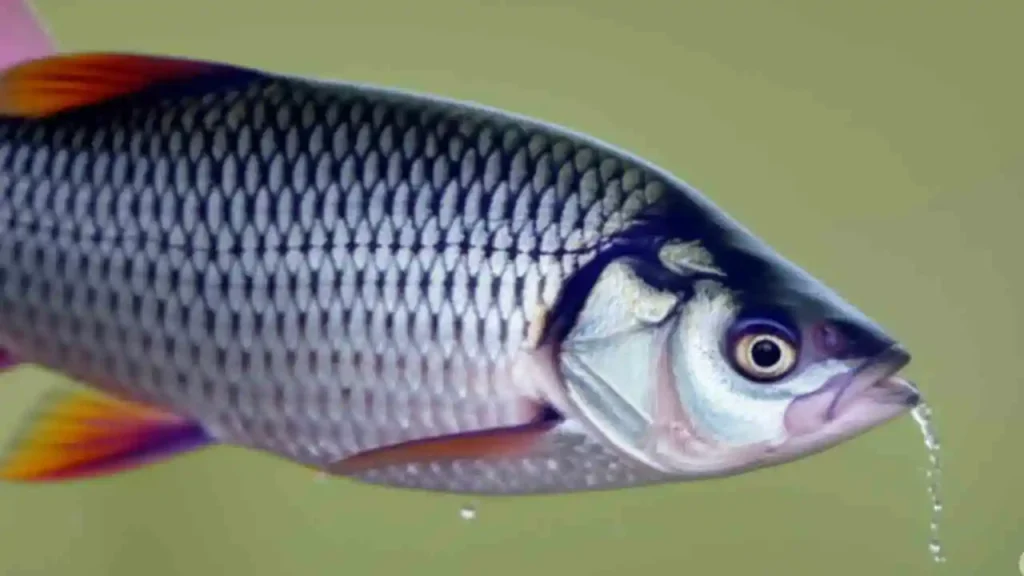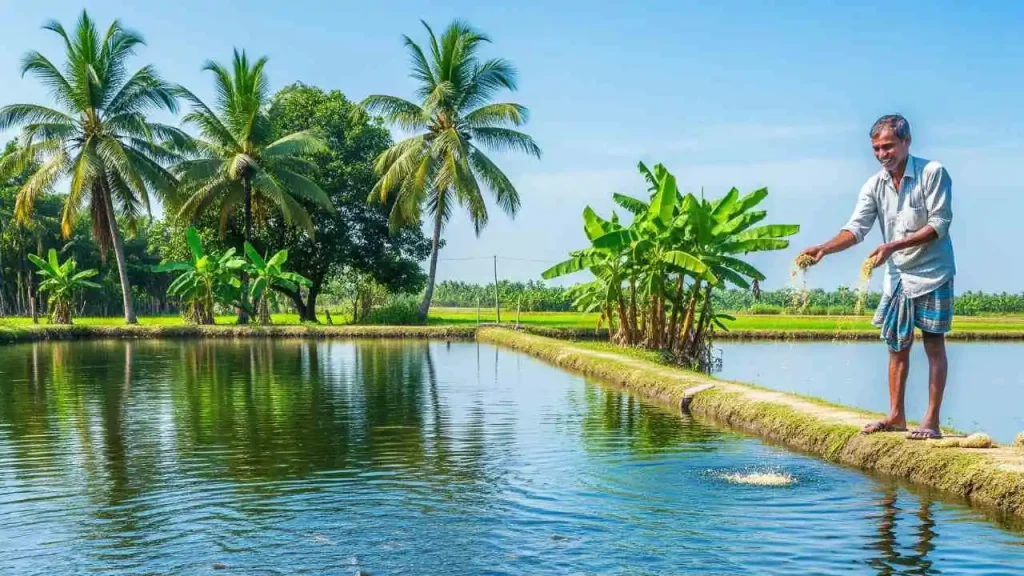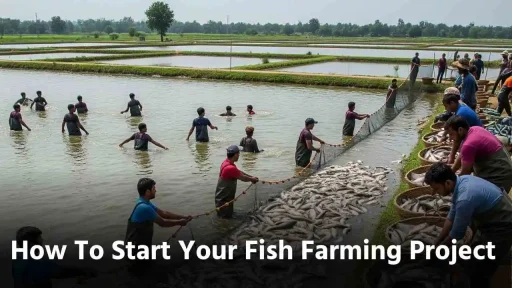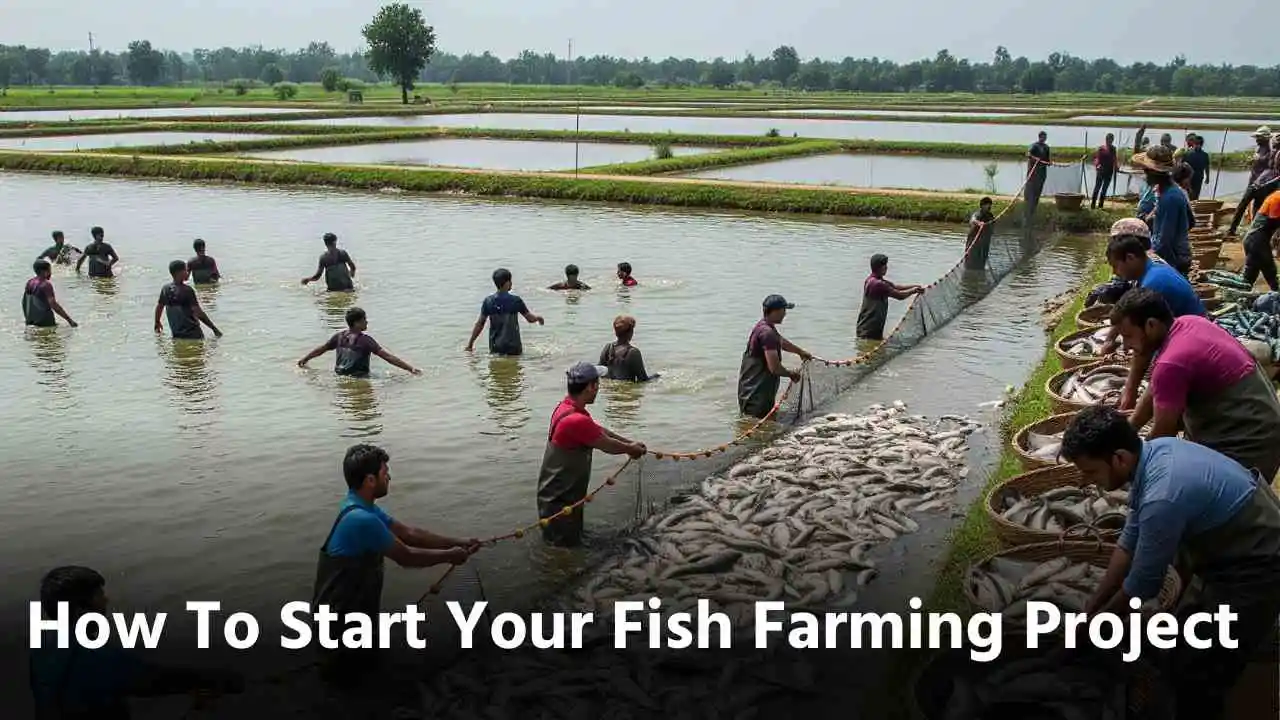Imagine the perfect Sunday lunch. What’s in the dish? Many of us love a tasty, steaming curry. The incredible demand for fish means that there is a gold mine waiting in our own backyards. The traditional method of catching fish in rivers and ponds doesn’t always suffice to meet the demand. The fish farming project is a great solution.
Understanding Fish Farming Project – Diving into New Opportunity

A fish farming project is a great way to provide fresh food to your community, create local jobs and build a profitable business from the ground-up. We’ll show you how to make this idea a reality.
Step to Dreaming Up Your Pond
Plan your dig before you start. Plan what you want. Note down your thoughts. You might regret not doing this. Firstly, choose your fish.
Step one: Select your fish. Choose fish that are popular and grow well in your region.
- Rohu & Catla: They are two very popular fishes, as they grow fast and tasty as well. Most importantly, they can live together without any problems
- Mrigal: The fish feeds on food at the bottom of the pond. It keeps the pond clean
- Tilapia: This fish grows quickly and is easy-to-care for. Beginners will enjoy this fish
- Pangas: This is another fish that grows rapidly. You can sell a lot of fish
Visit your local fish market to see what people are buying. Speak to the sellers.
Second Step To Grow More In This Fish Farming Project
Find Land and Water. You will need land that has clay soil so it can hold water. You need a constant source of clean, fresh water. It could be a rainwater system, a canal or a well. Test your water to ensure it’s safe for fish.
Let me tell you that the majority of people choose to raise their fish in ponds. It’s easy and inexpensive. It is easy to dig a pond and fill it with water. Then you add the fish. You can also use cages or tanks, but for beginners, a pond works best.
Make a Simple Plan. Don’t worry if it isn’t perfect. Identify your goals. What fish are you going to raise? What will your budget be for the pond and baby fish? How much electricity, food and money do you need to buy? What is your goal in terms of money? How will you sell the fish?
This plan will help you to stay focused. This plan is also helpful if you have to ask for money from a bank. Before you start digging, follow these steps. Plan ahead to make your life easier.
Related Articles: How to Start Manufacturing Business of Fish Feed
Turning Your Plan Into a Real Fish Farm
You must first dig the pond. Start by creating a rectangular shape. It should be about 5-6 feet deep. Be sure to pack the sides tightly. Water should not leak. You can slope the bottom of the pond a bit toward a pipe. You can drain the pond more easily later. Hire local workers to dig the ponds if you can.
The next step is to prepare the pond for fish. This part is important.
- Let the pond air dry for at least two weeks. The sun kills bacteria and germs
- Spread some agricultural lime at the bottom. This will keep the water clean for fish
- Add cow dung, or chemical fertilizer. This may sound strange, but it helps tiny plants grow (plankton). These are eaten by fish when they’re young
- Fill the pond up with fresh water. Your pond is now ready to be filled with fish
Want to choose best business Idea for your budget?
You can use our Startup Selector Tool to find best business project for yourself
The Big Day – Time to Add Your Fish
It’s finally here. Finally, you’re putting fish into your pond. It’s pretty awesome, isn’t it?
Choose Good Baby Fish. Do not buy fish from anyone. Visit a reputable hatchery. Healthy fish will grow faster and won’t be sick as often. Cheap fish may seem like an excellent deal, but can cause problems.
Next, let them get used to the water. Don’t just dump the fish into the pond. For 15 to 20 mins, float the bags in the pond. Add pond water slowly to the bags. Then gently release the fish. It helps the fish to settle and is good for their health.
Read Our Book To Grow Your Farming Business
Taking Care of Your Fish Every Day

Now, your primary job in this fish farming business is to feed and clean the fish.
You should feed them extra food, either buy fish food, or make it yourself using rice bran. Something is wrong if they do not seem to be hungry or behave strangely.
Keeping Water Clean Fish require clean water to remain healthy. Check to see if the water appears clear. Fish that come up to air often need more oxygen. Add air to the water by using a machine or simply mixing it. Every now and then, change some of the old water with fresh water. Fish get sick from dirty water.
Related Articles: Fisheries and Aquaculture Sector in India: Business Opportunities in Fisheries and Aquaculture Industry
Harvest Time: Reaping Your Delicious Rewards
You can harvest fish by pulling a large net from one end to the other. You can either do a partial catch, catching the largest fish, or drain the pond to complete the harvest.
From Pond to Table: Marketing your Fish
- Local shops and fish vendors
- Wholesalers can buy in bulk
- Local restaurants and hotels
Create a reputation of quality and freshness. A satisfied customer will return for more, and tell their friends.
Conclusion: More Than Just a Business
Fish farming project isn’t just a business. It’s an adventure. You start with a simple business idea, and end up building something real with your own hands. You connect with nature, feed people. The best part? Pulling a net full of fish from your own pond feels amazing. Sure, you make money, but it also feels great inside.
Read Our Project Report On Fish farming Business
Fish Farming Project: Frequently Asked Questions (FAQs)
Q1. How much money do I really need to start a small fish farm?
A: If you have land, you save a lot. Digging a small pond, buying young fish, and food can cost ₹50,000 to ₹1,50,000. Start small. Learn first. Grow later.
Q2. Is fish farming very difficult for a beginner?
A: It’s not too tough. Start simple. Use strong fish like Tilapia, Rohu, or Catla. Ask local farmers for tips. Keep your first farm small.
Q3. How long do I have to wait to make money?
A: You need to wait. Rohu and Catla take 8–12 months to grow big enough to sell. It’s not fast. But the profit can be good.
Q4. What if my fish get sick?
A: Keep the water clean. Don’t overcrowd the pond. Feed the fish well. This prevents most problems. If fish look sick, ask the local fisheries office for help.
Q5. Can I get any help from the government to start?
A: Yes. The government has some support schemes. You might get money for ponds or feed. Visit your local office and ask what’s available.







